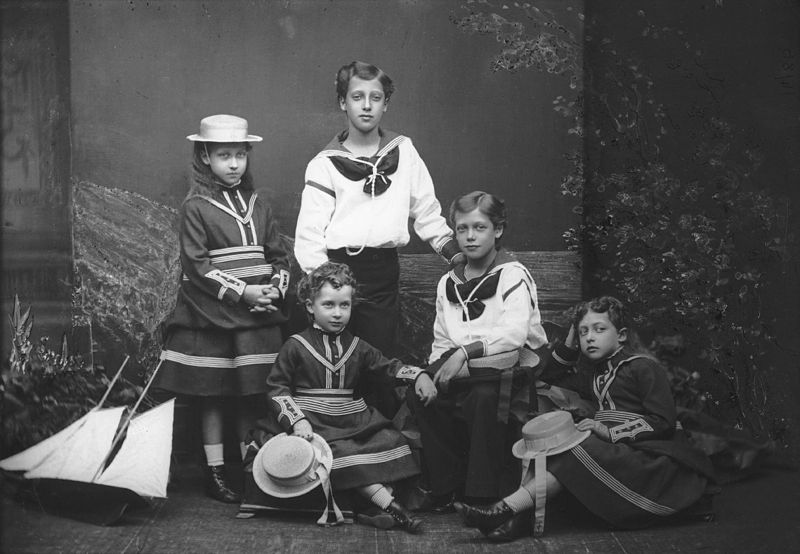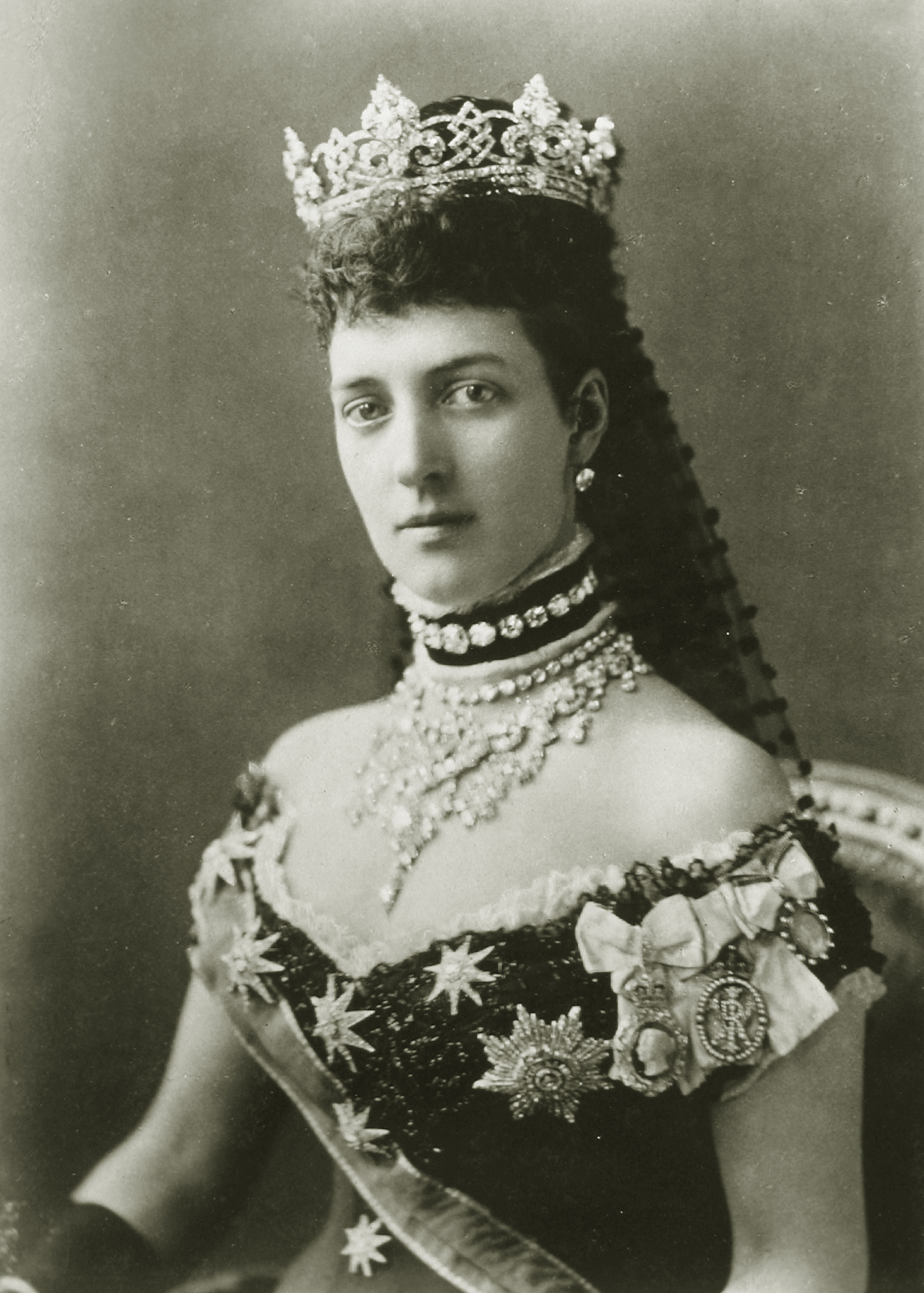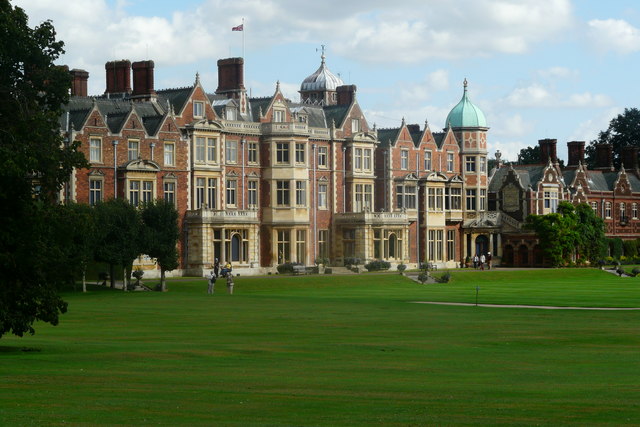by Susan Flantzer
© Unofficial Royalty 2014

Prince Albert Victor, Duke of Clarence; Credit – Wikipedia
Prince Albert Victor Christian Edward was born on January 8, 1864, at Frogmore House near Windsor Castle in Windsor, England. the eldest child of the then Prince and Princess of Wales, the future King Edward VII of the United Kingdom and Queen Alexandra, born Princess Alexandra of Denmark. His mother, who had been participating in indoor and outdoor winter festivities, did not even realize she was in labor, and disregarded the twinges of pain she had been feeling. However, her lady-in-waiting, Lady Macclesfield, who had given birth to thirteen children, realized what was happening. She sent for the Windsor town doctor because the royal doctors would have arrived in time. Because the baby was two months premature, nothing was ready for the birth. Despite last-minute preparations, the 3 3/4 pound prince was born strong and healthy, with only the Prince of Wales, Lady Macclesfield, and the doctor in attendance.
Following the wishes of his grandmother Queen Victoria, the baby was named Albert Victor, after the Queen and her late husband Prince Albert. He was given the additional names of Christian, after his maternal grandfather King Christian IX of Denmark, and Edward, one of his father’s names. The prince was always known as Eddy in the family and later as Prince Eddy in the press.
The infant prince was christened in the Private Chapel of Buckingham Palace on March 10, 1864. His godparents were:
- Queen Victoria (his paternal grandmother)
- King Christian IX of Denmark (his maternal grandfather)
- King Leopold I of Belgians (his great-great-uncle)
- Dowager Duchess of Schleswig-Holstein-Sonderburg-Glücksburg (his maternal great-grandmother, born Princess Louise Karoline of Hesse-Kassel)
- Duchess of Saxe-Coburg and Gotha (his great-aunt by marriage, born Alexandrine of Baden)
- Wilhelm, Landgrave of Hesse (his maternal great-grandfather)
- Crown Princess of Prussia (his paternal aunt, born Victoria, Princess Royal)
- Prince Alfred (his paternal uncle)

Prince Eddy with his mother and father; Credit – Wikipedia
When Eddy was seventeen months old, his brother George, the future King George V, was born. Because of their closeness in age, the two brothers were brought up and educated together. Eddy had a total of five siblings:
- King George V (1865 – 1936), married Princess Mary of Teck; had issue
- Princess Louise, Princess Royal (1867 – 1931), married Alexander Duff, 1st Duke of Fife; had issue
- Princess Victoria (1868 – 1935), unmarried
- Princess Maud (1869 – 1938), married King Haakon VII of Norway; had issue
- Prince Alexander John (April 6, 1871 – April 7, 1871)

Prince Eddy and his siblings; Credit – Wikipedia
Eddy, who was inattentive and lazy, never excelled in his studies. Perhaps this was due to his premature birth which can be associated with learning disabilities. When separating the brothers for the remainder of their education was considered, Eddy and George’s tutor John Neale Dalton recommended keeping them together because “Prince Albert Victor requires the stimulus of Prince George’s company to induce him to work at all.”
In 1877, Eddy and George joined the Royal Navy’s training ship, HMS Britannia. The brothers remained aboard the Britannia for nearly two years before embarking on a three-year cruise on the HMS Bacchante. Always accompanied by their tutor Mr. Dalton, the brothers visited the Mediterranean, the West Indies, South America, South Africa, Australia, China, and Japan.
In 1883, the brothers were separated and Eddy spent a short time at Trinity College, Cambridge. Eddy showed little interest in the intellectual atmosphere. His second tutor John Kenneth Stephens said, ” He hardly knows the meaning of the words to read.” Nevertheless, Prince Eddy received an honorary degree. Prince Eddy’s apathetic attitude and his lack of interest in anything serious caused great anxiety to his family especially since in the line of succession, he would inherit the throne after his father.

Prince Eddy and his brother Prince George; Photo Credit – Wikipedia
Eddy’s family decided that finding a suitable wife might help correct his attitude and behavior. Eddy proposed to his cousin Princess Alix of Hesse and by Rhine (later Empress Alexandra Feodorovna of Russia) but was rejected by her. Eddy then fell head over heels for French Catholic Princess Hélène of Orléans, who returned his love. However, Hélène’s father, the Comte de Paris, refused to allow his daughter to convert to Anglicanism and forbade the marriage.
It was at this time that, unbeknownst to her, Princess Mary of Teck was considered the most suitable bride for Eddy. Mary’s mother was a first cousin of Queen Victoria, Princess Mary Adelaide of Cambridge, the youngest child of Prince Adolphus, Duke of Cambridge (the seventh son and tenth child of King George III and Queen Charlotte). Eddy offered no resistance to this suggestion. Mary had been brought up to revere the British monarchy and to be proud that she was a member of the British Royal Family. The fact that Mary’s father was a product of a morganatic marriage could have presented difficulties for her in the marriage market. Despite Eddy’s shortcomings, Mary felt it was her duty to marry him.
Eddy proposed to Mary during a ball on December 3, 1891. The engagement was announced three days later and the wedding was set for February 27, 1892. The engagement was met with disdain by some German relatives who felt that dignified, well-educated Mary was unequal in rank due to her grandfather’s morganatic marriage. However, Queen Victoria approved wholeheartedly of the marriage.

Prince Eddy & Princess Mary of Teck; Credit – www.findagrave.com
Amid the wedding preparations, Eddy developed a high fever on January 7, 1892, at Sandringham in Norfolk, England. His sister Victoria and other household members already had been ill with influenza, which Eddy also developed. Two days later, his lungs became inflamed and pneumonia was diagnosed. In his delirium, Eddy frequently shouted the name “Hélène”, the name of the woman he originally wanted to marry.
In the early morning of January 14, 1892, a chaplain was summoned to Eddy’s bedroom at Sandringham. There, surrounded by his parents, the Prince and Princess of Wales, his brother George, his sisters Louise, Victoria, and Maud, his fiancée Mary, and her mother the Duchess of Teck, Eddy died at 9:35 a.m. Eddy’s funeral was held at St. George’s Chapel, Windsor and he was buried in the Albert Memorial Chapel in St. George’s Chapel in Windsor, England. Mary’s wedding bouquet of orange blossoms lay on his coffin.

Tomb of Prince Albert Victor (Eddy); Credit – www.findagrave.com
After the death of Prince Eddy, Mary and Eddy’s brother George, now second in the line of succession, spent much time together. As time passed and their common grief eased, there was hope that a marriage might take place between them. George proposed to Mary beside a pond in the garden at his sister Louise’s home, East Sheen Lodge, on April 29, 1893. The engagement was announced on May 3, 1893, with the blessing of Queen Victoria. The couple married on July 6, 1893, and eventually became the beloved King George V and Queen Mary.
This article is the intellectual property of Unofficial Royalty and is NOT TO BE COPIED, EDITED, OR POSTED IN ANY FORM ON ANOTHER WEBSITE under any circumstances. It is permissible to use a link that directs to Unofficial Royalty.
Recommended Book
- Prince Eddy: The King Britain Never Had – Andrew Cook
















